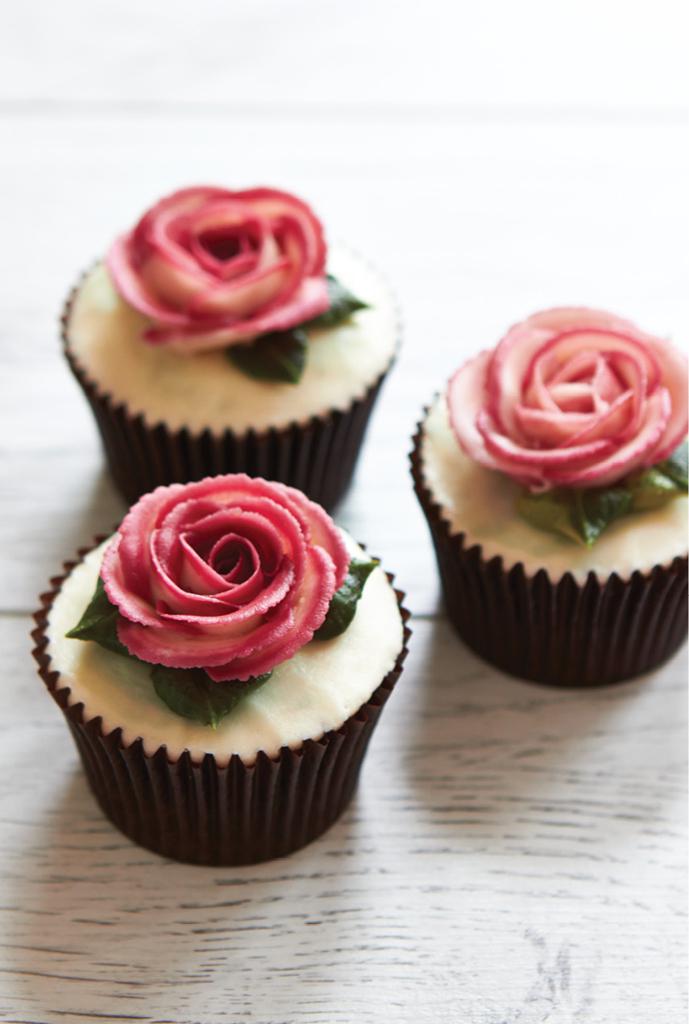The Contemporary Buttercream Bible (21 page)
Read The Contemporary Buttercream Bible Online
Authors: Christina Ong Valeri Valeriano


A
2 Repeat the same process and pipe two or more
layers of petals. Make sure you pipe the succeeding
petals in between the first row (B).
B
238
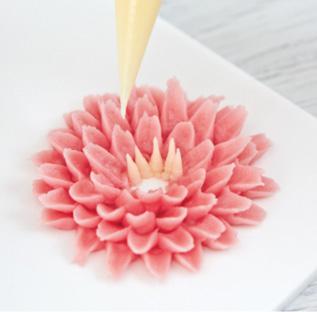
3 Cut the tip of the piping bag and use plain
buttercream to pipe spikes in the centre of each of
the flowers by holding the piping bag at a 90 degree
angle and squeezing it until the buttercream creates
a vertical line, then release the squeeze before
pulling the bag away abruptly (C).
C
4 Pipe some leaves using a leaf nozzle (see
Sunflower and Leaves) (D).
239
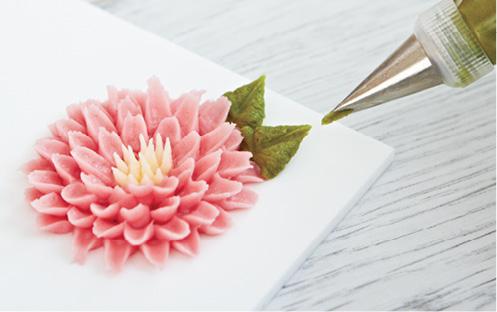
D
Tip
Make sure that you pipe the petals really close
to each other so that you cannot see any gaps
in between. This flower can be piped on the
side of the cake but be careful not to make it
too big because this will make it heavy and it
could potentially fall off.
Daffodil
1 Pipe a guide circle and ‘points’ to help you
position the petals evenly (A).
240
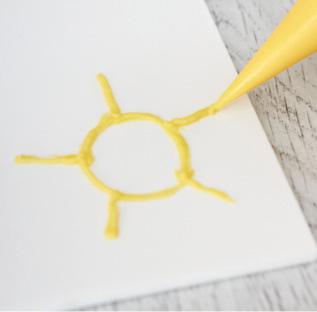
A
2 Using a small petal nozzle (Wilton 104), position
the nozzle at a 20 to 30 degree angle with wide end
pointing down. While continuously squeezing the
piping bag, move the nozzle up (B) then turn it to
the right and back down until you create a long
petal (C). Make sure there is no gap in the middle.
Repeat the same process and pipe a total of five or
six petals.
241
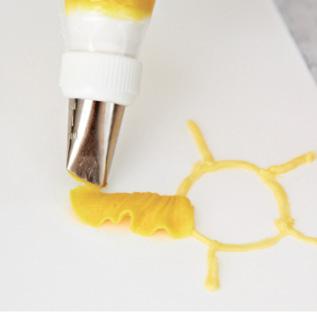
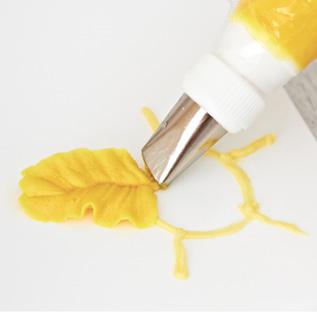
B
C
3 Cut the tip off a piping bag and use slightly darker yellow-tinted buttercream to pipe an overlapping
spiral as the centre of the flower, about 1–1.5cm (1⁄2–
5⁄8in) tall (D).
242
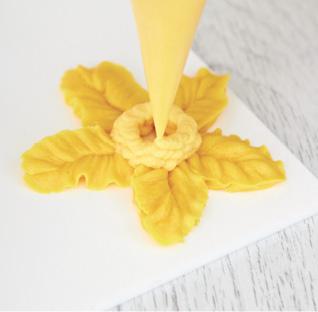
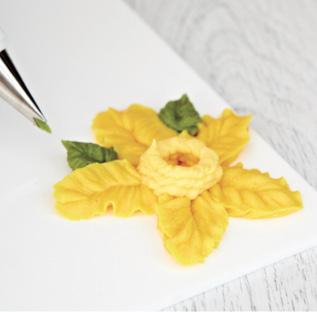
D
4 Pipe some leaves using a leaf nozzle (see
Sunflower and Leaves) (E).
E
243
Tip
With daffodil petals, you just have to follow a
long ‘U’ shape without a gap in the middle.
Make sure you pipe five petals or your flower
won’t look right.
244
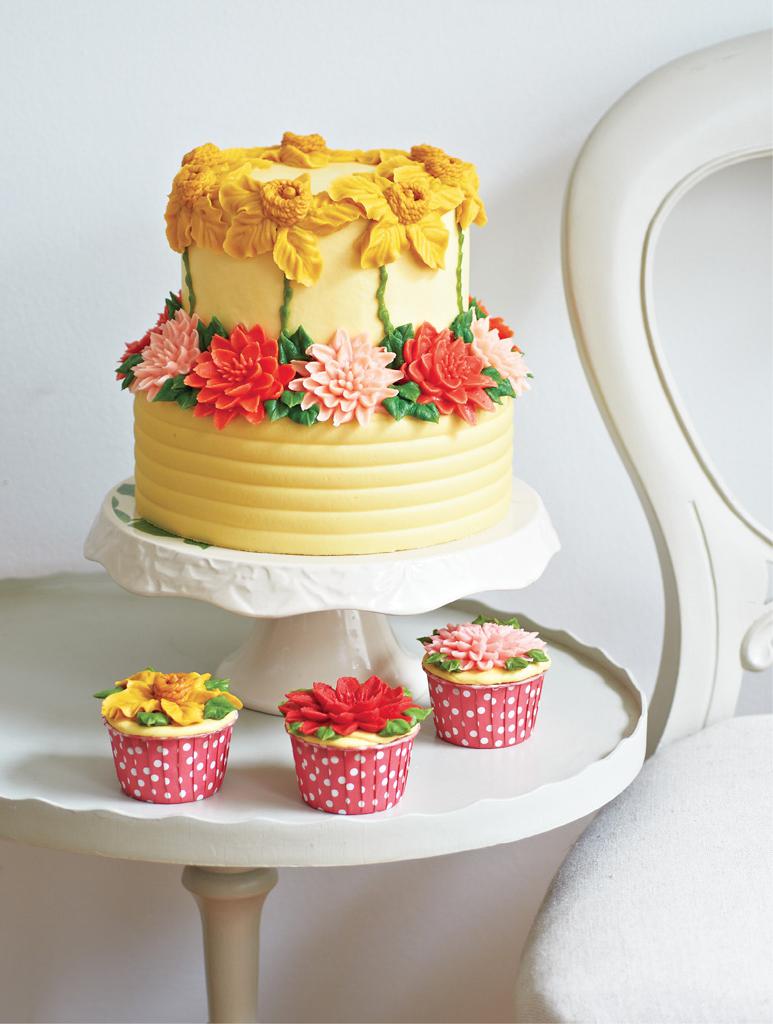
To create this cake…
• 20 × 10cm (8 × 4in) round cake (bottom tier), 15
× 10cm (6 × 4in) round cake (top tier)
• Dowel rods
245
• 1.8–2.5kg (4lb–5lb 8oz) buttercream
• Paste colours: light yellow, (Sugarflair Melon and
Autumn Leaf), mid yellow (Sugarflair Melon and
Autumn Leaf), pink (Sugarflair Pink), orange
(Sugarflair
Egyptian
Orange),
light
green
(Sugarflair Gooseberry), dark yellow (Sugarflair
Autumn Leaf), dark green (Sugarflair Spruce
Green)
• Piping bags
• Petal nozzle (Wilton 104)
• Leaf nozzle (Wilton 352)
• Chrysanthemum nozzle (Wilton 81)
• Scalloped cake comb
• Scissors
• Cake stand or covered cake board
Crumb coat, dowel and stack the cakes (see
Buttercream Basics) and place on a stand or
covered cake board. Cover the cakes with
600–700g (1lb 5oz–1lb 9oz) of light yellow tinted
buttercream, giving the top tier a smooth finish and
the bottom one a ridged finish with the cake comb
(see Covering Cakes in Buttercream Basics). Colour
246
the remaining buttercream in the following
quantities 250–350g (9–12oz) each of mid yellow,
pink and orange, and 150–250g (51⁄2–9oz) each of
light green, dark green and dark yellow. Pipe the
flowers according to the tutorials, using mid yellow
and dark yellow for the daffodils and orange and
pink for the chrysanthemums. Add some stems in
light green and leaves in dark green (see Sunflower
and Leaves).
247
Rose and Rose Bud
Roses are undeniably the most popular flower of all.
Often described as the symbol of love, a rose never
fails to touch someone’s heart. A single rose on a
cupcake or a cake says it all. How much more will a
bouquet of roses express? With sufficient practice,
you can master how to pipe truly realistic
buttercream roses that will create a stunning effect.
248
